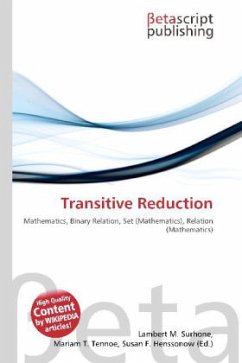
Nonlinear Dimensionality Reduction
Versandkostenfrei!
Versandfertig in 6-10 Tagen
23,99 €
inkl. MwSt.

PAYBACK Punkte
12 °P sammeln!
Please note that the content of this book primarily consists of articles available from Wikipedia or other free sources online. High-dimensional data, meaning data that requires more than two or three dimensions to represent, can be difficult to interpret. One approach to simplification is to assume that the data of interest lies on an embedded non-linear manifold within the higher-dimensional space. If the manifold is of low enough dimension then the data can be visualised in the low dimensional space. Below is a summary of some of the important algorithms from the history of manifold learnin...
Please note that the content of this book primarily consists of articles available from Wikipedia or other free sources online. High-dimensional data, meaning data that requires more than two or three dimensions to represent, can be difficult to interpret. One approach to simplification is to assume that the data of interest lies on an embedded non-linear manifold within the higher-dimensional space. If the manifold is of low enough dimension then the data can be visualised in the low dimensional space. Below is a summary of some of the important algorithms from the history of manifold learning and nonlinear dimensionality reduction. Many of these non-linear dimensionality reduction methods are related to linear methods which are listed below. The non-linear methods can be broadly classified into two groups: those which actually provide a mapping (either from the high dimensional space to the low dimensional embedding or vice versa), and those that just give a visualisation. Typically those that just give a visualisation are based on proximity data - that is, distance measurements.












